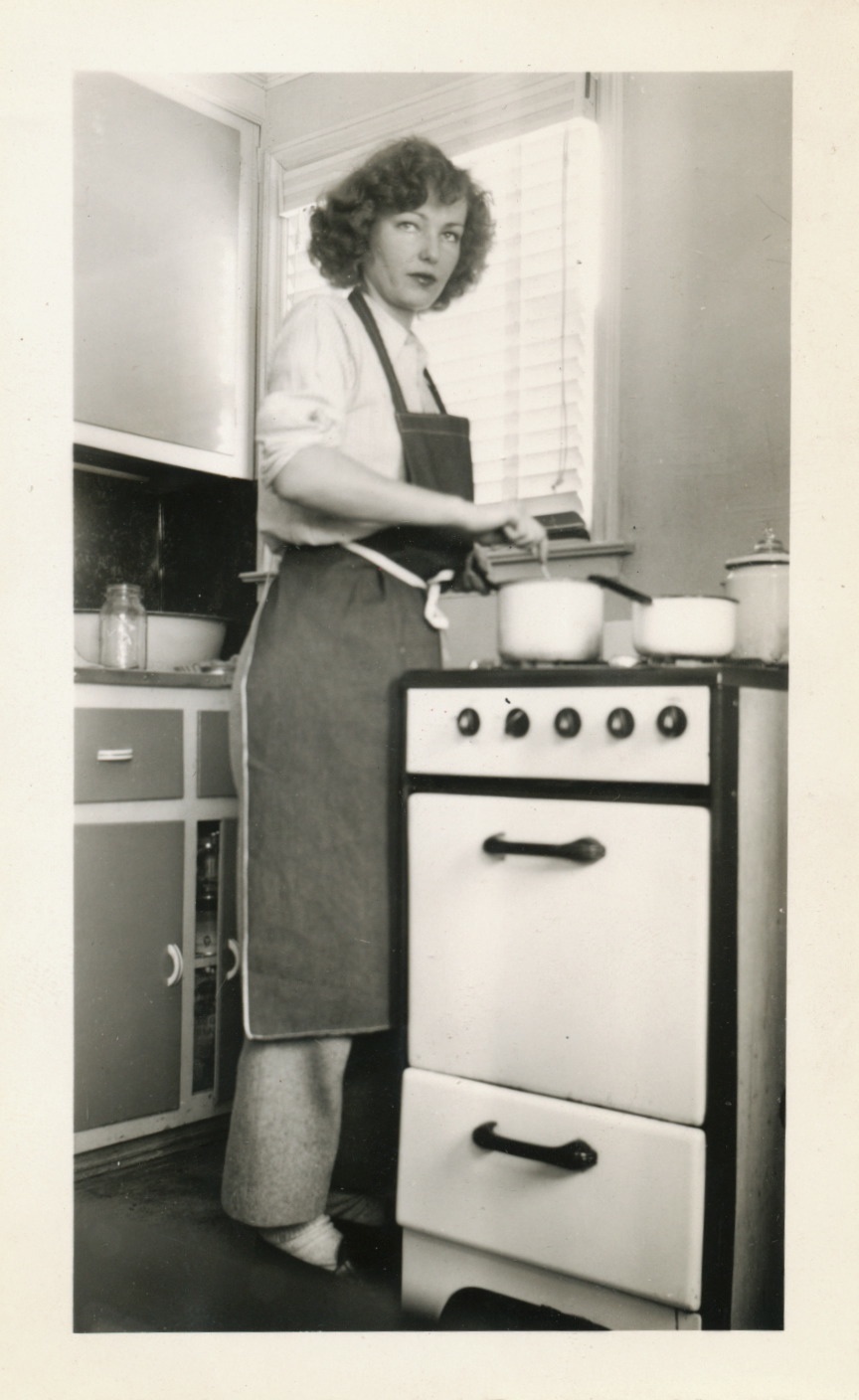My mother, Mary Alice, was a latter-day suffragette. A rumored communist party member in the ’30s (or, at the very least, a bang-up socialist), she was always fighting the system and for good reason. Her chosen profession, school psychologist, put her up against a bureaucracy that was rigged for men—semiprofessionals of a lower order, hidebound, territorial, and well-fanged—much like encountering a group of particularly savage baboons in western Uganda (an experience I was to have with my mother in the late ’60s). In an academic setting, this savagery took its toll behind closed doors and over years, not minutes.
That led to an alternate life, one landscaped by organic gardens, a love of New Age health advocates such as Bonnie Prudden and Adelle Davis (“Let’s Eat Right to Keep Fit”), and a social group made up of New York misfits who visited the farm for summer outings. One of my clearest memories is of three nuns—Faith, Hope and Charity—playing badminton on our lawn. Of course there were the folksingers, the fundraising cocktail parties for Jack Kennedy and later, Bobby, and all sorts of stray intellectuals—the sort that felt right at home in our exurban commune. Every summer evening was launched with gimlets and cheddar cheese on the porch until the mosquitoes ran amok.
In later years, Thanksgiving was a happy routine, a long weekend visit at my mother’s retirement farm in Salisbury, Connecticut. My family arrived midday, and the turkey was warming in a 175°F oven per Adelle Davis’ sous vide theory of cooking meat at its final resting temperature. Keenly aware that bacteria doubles every twenty minutes, my first act was to raise the oven to 325°F, hoping not to lose a family member to an outbreak of salmonella. (I later revealed my stratagem and confronted my mother about the risk to my four small children. Her reply was, “Well, I haven’t killed any of you yet,” a retort that I always felt was evidence of good luck rather than good practice.)
The rest of the meal was from the root cellar—carrots, parsnips, beets, potatoes—most of which were microwaved without the benefit of salt or other seasonings. A virtuous meal, to be sure, but I always brought the desserts: three pies (apple, pecan and pumpkin) plus a chocolate trifle for the kids. I had no desire to get up from the Thanksgiving table only comfortably full.

This lack of culinary breeding led me to the Joy of Cooking and Fannie Farmer at an early age. My first major attempt at age 8 was chocolate cake with seven-minute frosting, the latter half of which was an abject failure, having the consistency of runny snot. The family, demonstrating an unbecoming level of support, offered nothing but praise, igniting the fires of my future career.
My heritage is not one of great culinary adventure. Instead, Mary Alice left me with a great appetite for the outdoors, for gardening, for root vegetables stored in sand, and for bushel baskets of Green Mountain potatoes in a dark cellar with a good flow of cold air to keep things from rotting. (Always store apples in a separate area.) I have butchered beefers and pigs. I have milked more cows than I can count, used their milk to make ice cream, and spent afternoons shoveling their manure. I have raised bees, made my own maple syrup, hayed on hot July days, and eaten pickled cow’s tongue out of a gallon-size jar filled with liquid the color of Oz on a dark, rainy day.
Mary Alice turned to the earth for solace and food. She surrounded herself with good topsoil, a .22 pistol to keep the bears out of the bird feeder, and a large brush dipped into a can of creosote. One Saturday night, she got liquored up on Jack Daniel’s and drove a World War II surplus Jeep helter-skelter up the mountain, with my sister and me hanging on for dear life, bugs smashing into our faces like grapeshot.
My last memory is a Sunday goodbye one Thanksgiving weekend. She often waved us off, standing high above on her second-floor porch. Tears trickled from her eyes, but the kids didn’t notice. Their grandmother was beyond their known world, like an outcast sorceress from the Grimm brothers. In later years, they would remember a woman ahead of her time, who put local above global, who dug deep into the loam for nourishment.
In our family, the garden is still hallowed ground. It is planted every year with seeds and a fond hope of growing memories, of hands digging deep to find something rich and unexpected.



